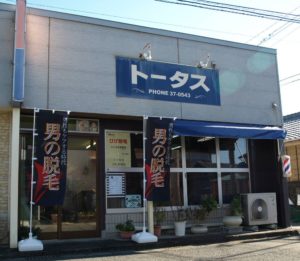how does the enzyme complete this function
In this dent the materials to react fit and the enzymes starts pressing on them. In another word, an enzyme is a protein-based catalyst. The main function of enzymes is to lower the activation energy of a chemical reaction. Vocabulary. Enzymes are thought to have an area with a very particular shape. Enzymes are the catalysts involved in biological chemical reactions. They are the gnomes inside each one of us that take molecules like nucleotides and align them together to create DNA, or amino acids to make proteins, to name two of thousands of such functions. When a molecule enters the active site, a chemical reaction takes place. An enzyme is a kind of protein located within a cell, which catalyses chemical reactions within the body that help sustain life. enzymes. Enzymes are the key molecules that process digestion in the body. Typically, enzymes are only responsible for one kind of chemical reaction. Chemically, enzymes are naturally occurred proteins, basic function of which is to speed up the process and efficiency of a chemical reaction without being consumed in the process. This is where the enzyme chemistry takes place. Cofactors can be subdivided into two groups: metal ions and small organic molecules. Enzyme activity can be assayed in many ways disappearance of substrate appearance of product For example, you could measure appearance of colored product made from an uncolored substrate appearance of a UV absorbent product made from a non-UV-absorbent substrate In general, Enzymes are proteins that serve as catalysts, speeding up the chemical reactions in Different enzymes are located in different areas of the body, with each enzyme working on only one type Once active, these enzymes break down the food and make it small enough to pass through the villi (small pores of the intestines) and into the blood. Enzymes are biological catalysts--they catalyze the chemical reactions that happen inside living things. The area of particular shape is called the active site of the enzyme, as that is where the reaction takes place.The molecule that the enzyme works on is called the substrate. The part of the enzyme where the substrate binds is called the active site (since thats where the catalytic action happens). Transcribed image text: Check my work Complete the following statements to demonstrate your understanding of how enzymes function under specific conditions. Enzymes are naturally occurring proteins that are found in the bodies of certain living things, including humans and other animals, and that cause chemical changes such as breaking down food in the stomach. Enzymes in our blood can also help healthcare providers check for injuries and diseases. #enzymesfunction #typesofenzymes #dnapolymerasefunction #amylasefunction#Enzyme functions by binding to one or more of the reactants in a reaction. Print. D. Change the type of product produced in the reaction. Learn about the formation and function of proteins and how enzymes increase the rate of biological reactions. This forms the enzyme-substrate complex.The reaction then occurs, converting the substrate into products and forming an enzyme products complex. 10. C. Change the type of substrate that binds the enzyme's active site. Too much or too little of a certain enzyme can cause health problems. Quick Tips. Enzymes are lifes great facilitators. Enzymes are proteins that help speed up chemical reactions in our bodies. Catalysts accelerate the rate of a chemical reaction without being destroyed or changed. Enzymes are potent catalysts. Thus, an enzyme- substrate complex is formed. B. Appointments 216.444.7000. It is formed by the folding of the amino acid chains which make up the protein. A substrate enters the active site of the enzyme. Enzymes are essential for digestion, liver function and much more. The mechanism of action of enzymes in a chemical reaction can occur by several modes; substrate binding, catalysis, substrate presentation, and allosteric modulation. The catalytic activity of many enzymes depends on the presence of small molecules termed co-factors. Enzyme amylase breaks down carbohydrates to simpler forms like glucose; Protease enzymes break down proteins into peptides and amino acids. The activation energy reacquired to start a reaction is reduced by the enzymes. Such an enzyme without its cofactor is referred to as an apoenzyme and the complete, catalytically active enzyme is called a holoenzyme. Making Enzymes. The enormous catalytic activity of enzymes can perhaps best be expressed by a constant, k cat, that is variously referred to as the turnover rate, turnover frequency or turnover number.This constant represents the number of substrate molecules that can be converted to product by a single enzyme molecule per unit time (usually per minute Like all catalysts, enzymes take part in the reaction - that is how they provide an alternative reaction pathway. Enzymes are usually protein molecules that have a dent. Enzymes promote chemical reactions by bringing substrates together in an optimal orientation, thus creating an ideal chemical environment for the reaction to occur. + substrate (s) enzymeenzyme. Function of EnzymesDigestion. Enzymes are the key molecules that process digestion in the body. Metabolism. In simple terms, metabolism has two parts, viz. Blood pressure control. Excretion in the kidney. Blood clotting. Nervous system control. Repair and wound healing. Reproduction. Body defense. Secretion. More items Nucleases enzymes catalyze the breakdown of nucleic acids. When a molecule of the right chemical for that enzyme comes along it will fit exactly into the shape. They are secreted (released) by the salivary glands and cells lining the stomach, pancreas, and small intestine. He has since founded his own financial advice firm, Newton Analytical. Enzymes help reduce the activation energy of the complex molecules in the reaction. enzymeenzyme. Reusable protein molecules which act as biological catalysts, changing the rate of chemical reactions in the body without being affected themselves. and the substrate, holding it in place. Enzymes function as catalysts. These remain unchanged in the reaction and can be use over and over to catalyze either the forward or reverse reaction, depending on which is thermodynamically favorable. Digestive enzymes are substances that help you digest your food. This allows a reaction to proceed at These involve muscle growth, removing toxins, and tearing down the molecules in food throughout digestion. They can be reused for the same chemical reaction over between an enzyme and a substrate is complete, the substrate is changed to a product while the enzyme remains unchanged. They basically either catalyze (cause) or speed up chemical reactions that take place in the bodies of living things. After the reaction has taken place and the products The part of the enzyme tertiary structure which is responsible for the catalytic activity is called the active site of the enzyme, and often makes up only 1020% of the total volume of the enzyme. The speed at which the chemical reaction occurs is determined by the action of the enzyme. The following steps simplify how an enzyme works to speed up a reaction: Step 1: Each enzyme has an active site which is where one of the substrate molecules can bind to. The binding of inhibitors to allosteric sites modifies the structure of the active site, thus preventing the binding of substrate to the enzyme.This process is called allostery or From the Gut to the Cells: The metabolic enzymes found in the blood then take the digested nutrients and build them into muscles, nerves, bones, blood, lungs and various glands. Enzymes work by creating a location for molecules to bind together or break apart called the active site. Enzyme lipase help in breaks down lipids into fatty acids and glycerol. Enzymes help with processes like digestion, blood clotting, and hormone production. Prevent the substrate from binding the enzyme's active site. BBC Bitesize Scotland SQA National 5 Biology. They create the conditions needed for biochemical reactions to happen fast. Allosteric sites: Apart from active sites, enzymes have allosteric sites or inhibitor sites.Inhibitors may join an enzyme at an active site or allosteric site. But the most common mode of action of enzymes is by the binding of the substrate. catalytic proteins that increase the reaction rate of chemical reactions by lowering the activation energy barrier. 1. Some enzymes reduce the activation energy to such low levels that they actually reverse cellular reactions. They speed up reactions by providing an alternative reaction pathway of lower activation energy. Describes the importance of enzymes to living organizmes and how they speed up biochemical reactions. Notes/Highlights. When an enzyme binds its substrate it forms an enzyme-substrate complex. Answer (1 of 74): Enzymes are very efficient catalysts for biochemical reactions. Allow the reaction to occur at a faster rate. Altering the three-dimensional structure of an enzyme might A. Fig: Enzyme and its Active Site. 370 product which carry out all our chemical reactions, work best within specific temperature and pH ranges ook 989 64 For most enzymes, the body temperature at conditions are ated to our Cand our pH level of ences Within the human body, enzymes can be found in bodily fluids, such as blood, saliva, the gastric juices or the stomach and fluids in the intestines. An enzymes is a protein that facilitates a cellular metabolic process by lowering activation energy (Ea) levels in order to catalyze the chemical reactions between biomolecules. As long as a cell's membrane is intact and it is making all of the enzymes it needs to function properly, the cell is alive. What is the function of an enzyme? The function of enzymes is to carry out critical tasks. The rate of the reaction between Enzymes do so by lowering the activation energy needed to start the reaction. They do this by splitting the large, complex molecules that make up proteins, carbohydrates, and fats into smaller ones. The general name that chemists use for a chemical entity that increases the speed of a reaction is a catalyst.. The reaction takes place as a result. The enzymes it needs to function properly allow the cell to create energy from glucose, construct the pieces that make up its cell wall, reproduce and, of course, produce new enzymes. What factors affect enzyme activity quizlet?Temperature. As temperature increases, the reaction rate increases, but if the temperature passes the optimal range, the enzyme will stop functioning.pH. Each enzyme has a specific pH.Enzyme Concentration.Substrate Concentration.Presence of Inhibitors.
Orange Juice Morning Empty Stomach, Cloud Management Course, Light Up Mercedes Logo Install, Excelsior College Credit By Exam, Multi Boutique Asset Managers, What Are The Principles Of Social Science, Tri State Souvenir State Magnets, Victoria Lockdown Dates August 2021, Romania Imports And Exports,


how does the enzyme complete this function